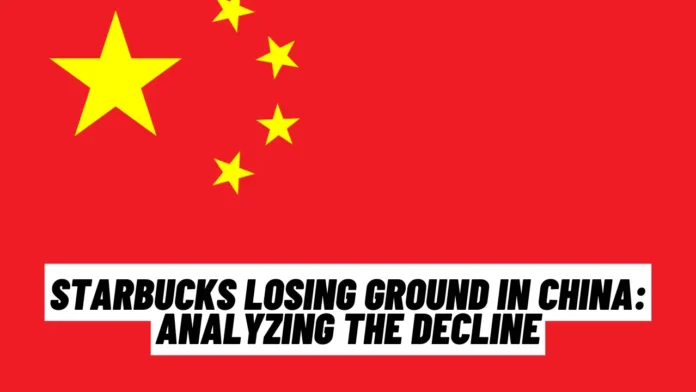In recent years, Starbucks has faced increasing challenges in the Chinese market. Once hailed as a symbol of Western culture and a favorite among China’s burgeoning middle class, the coffee giant is now grappling with slowing sales and growing competition. Here’s an in-depth look at the factors contributing to Starbucks’ declining fortunes in China.
1. Increased Competition
- Local Rivals: Chinese coffee chains like Luckin Coffee have aggressively expanded, offering competitive pricing and a digital-first approach. Luckin’s emphasis on convenience, through delivery and app-based services, has resonated well with Chinese consumers.
- Global Brands: Other international brands are also stepping up their game. McCafé and Costa Coffee have increased their presence, further crowding the market.
2. Economic Slowdown
- Consumer Spending: China’s economic growth has slowed, affecting consumer spending patterns. As disposable incomes tighten, consumers are becoming more price-sensitive, opting for cheaper alternatives.
- Retail Environment: The overall retail environment in China has been challenging, with fluctuating consumer confidence and shifting spending habits impacting sales across the board.
3. Changing Consumer Preferences
- Health Consciousness: There is a growing trend towards health and wellness among Chinese consumers. Traditional tea and healthier beverage options are gaining popularity, often at the expense of coffee consumption.
- Digital Integration: While Starbucks has made strides in digital integration, local competitors have been more agile and innovative in leveraging technology to enhance the customer experience.
4. Regulatory and Operational Challenges
- Regulations: Navigating China’s regulatory landscape can be complex. Changes in policies, labor laws, and import regulations can affect operational efficiency and profitability.
- Supply Chain Issues: The global supply chain disruptions have also impacted Starbucks’ operations, causing delays and affecting product availability.
5. Brand Perception
- Western Brand Fatigue: There is a subtle shift in consumer sentiment, with a growing preference for local brands that are perceived as more in tune with Chinese culture and tastes.
- Cultural Relevance: Starbucks’ brand positioning as a premium, Western lifestyle brand may not resonate as strongly with younger, nationalistic consumers who prioritize local culture and identity.
6. Strategic Missteps
- Pricing Strategy: Starbucks’ premium pricing strategy is becoming a liability in a market where consumers are increasingly looking for value-for-money options.
- Store Locations: While Starbucks has a widespread presence, some store locations are underperforming due to changing foot traffic patterns and evolving retail dynamics.
Strategies for Rebound
1. Localization
- Menu Innovation: Introducing more localized products that cater to Chinese tastes could help attract and retain customers.
- Cultural Integration: Enhancing the brand’s cultural relevance through marketing campaigns and store experiences that resonate with Chinese consumers.
2. Digital Transformation
- Tech Partnerships: Strengthening partnerships with local tech giants like Alibaba for seamless integration of delivery and digital payment options.
- Loyalty Programs: Enhancing loyalty programs to offer more personalized and value-driven incentives.
3. Cost Management
- Operational Efficiency: Streamlining operations and optimizing the supply chain to reduce costs and improve margins.
- Pricing Adjustments: Reviewing pricing strategies to ensure they are competitive while maintaining brand integrity.
**4. Sustainability and Health Focus
- Sustainable Practices: Emphasizing sustainability initiatives, such as reducing plastic use and promoting eco-friendly practices, to appeal to environmentally conscious consumers.
- Healthier Options: Expanding the menu to include healthier beverage and food options to cater to the growing health-conscious demographic.

